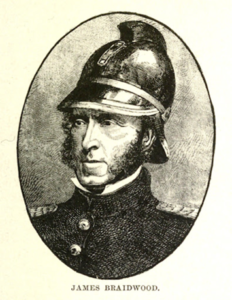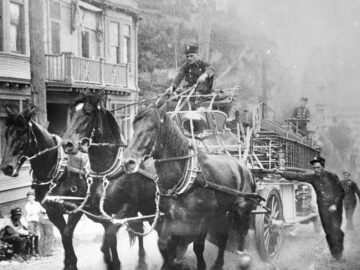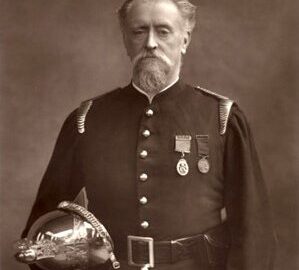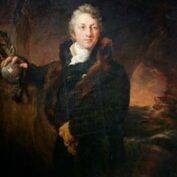Role: Firefighter, Master of Fire Engines

James Braidwood (1800–1861) was a Scottish firefighter who founded one of the world’s first municipal fire service in Edinburgh in 1824 and pioneered the science of modern fire-fighting. He was the first director of the London Fire Engine Establishment (the brigade which was eventually to become the London Fire Brigade). He is credited with the development of the modern municipal fire service.
Appointed Master of Fire Engines at the age of 24, two months prior to the Great Fire of Edinburgh, Braidwood established principles of fire-fighting that are still applied today. His training as a surveyor gave him exceptional knowledge of the behaviour of building materials and housing conditions in the Old Town of Edinburgh. He recruited to the service expert tradesmen – slaters, carpenters, masons and plumbers – who could apply their various fields of expertise to fire fighting. He also recruited experienced mariners for an occupation that required heavy manual work in hauling engines and trundling wheeled escape ladders up and down Edinburgh’s steep streets, as well as nimble footwork when negotiating rooftops and moving through partially destroyed buildings. His many original ideas of practical organisation and methodology, published in 1830, were adopted throughout Britain. He was, however, resistant to the introduction of steam-driven engines. In 1833 he left Edinburgh to lead the London Fire Engine Establishment. The London Fire Engine Establishment had to fight a blaze at the Palace of Westminster, on 16 October 1834, that destroyed almost all of the Palace.
Braidwood was distinguished for his heroism on the occasion of great fires in Edinburgh (1824) and London (1830). He also undertook a pastoral role, introducing visits to ordinary firemen and their families by the London City Mission.
As a strange curiosity, Braidwood was the first witness at the trial of William Burke of Burke and Hare fame. He gave evidence on Christmas Eve of 1828, in his capacity as an Edinburgh builder, who had been commissioned by the authorities to draw scale plans of the notorious lodging house on Tanners Close where the murders took place. His evidence was simply to state that the plans were an accurate representation of the building. On 22 June 1861 he died in the Tooley Street fire at Cotton’s Wharf near London Bridge station when a falling wall crushed him, three hours after the fire began. It took two days to recover his body and his heroism led to a massive funeral on 29 June where his funeral cortege stretched 1.5 miles (2.4 km) behind the hearse, a public spectacle equal almost to the Tooley Street fire. The fire, which continued to burn for a fortnight, caused damage valued at £2,000,000, equivalent to £188,004,367 in 2019. A London fireboat was named in his honour in the 1930s.





